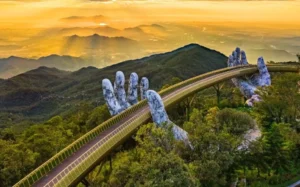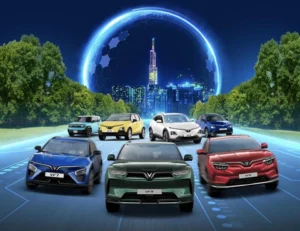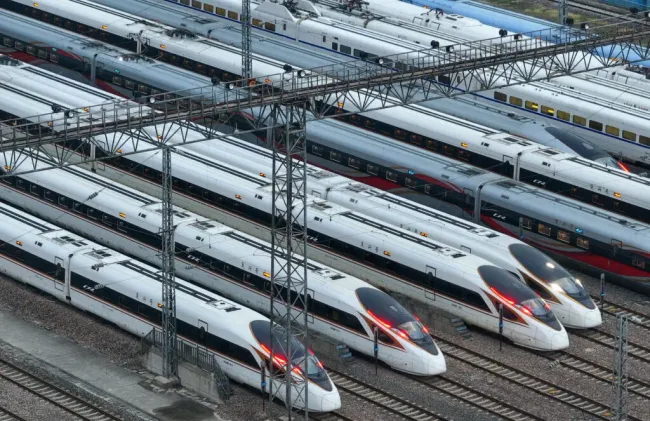Railway transport is an important part of any country’s passenger and cargo transport system.
High-speed railway models (HSR) over 300km/h have been built and effectively promoted in many countries such as Japan, China, Germany, France, Spain… Experience shows that the development of HSR systems will bring many great benefits, from the economy, society, environment, urban restructuring, strengthening regional connectivity, growth poles…
“Locomotive” supporting socio-economic development in China
At the start of the 21st century, China had no high-speed rail. Slow trains crisscrossed the vast country, making journeys like Shanghai-Beijing a test of patience. But now, China has the world’s largest high-speed rail network. The fastest Chinese high-speed trains operate at 350 km/h, making them the fastest in the world, most famously the CR400 Fuxing system.
China has been researching and building a high-speed rail system since the early 1990s, and has been building high-speed rail at a rapid pace since 2007. In August 2008, China’s first high-speed railway line, Beijing-Tianjin, was put into operation. Since then, China has officially entered the era of high-speed rail. Over the past 16 years, the network has reached every provincial-level administrative unit in China.
Currently, China’s high-speed rail network has the longest operating distance in the world, exceeding 46,000 km, accounting for more than 70% of the world’s total high-speed rail length. Of which, the number of kilometers of high-speed rail operating at speeds of 300-350 km/h is 20,000 km (accounting for 43%), the number of kilometers of high-speed rail operating at speeds of 200-250 km/h is 26,000 km (accounting for 57%).
Among more than 100 high-speed railway lines in China, the railway line connecting the two largest cities in China, Beijing – Shanghai, is the high-speed railway line with the largest investment and is also the line that can create the greatest economic value in China.
In June 2011, the Beijing-Shanghai high-speed railway with a total investment of 220.9 billion yuan (about 31.5 billion USD) officially opened for operation. This railway passes through 7 provinces and cities in Eastern China with a total length of 1,318 km, the entire route uses self-propelled trains with a maximum speed of up to 380 km, it is the high-speed railway with the highest technology standards in the world at that time.
The Beijing-Shanghai High-Speed Railway is the largest investment project since the founding of the People’s Republic of China. At the beginning of the project, the debt-to-asset ratio of the railway was at times over 60%, and the pressure for compensation was enormous. At that time, many people asked the question of when the railway would be able to recover its capital and make a profit.
However, since its opening, the Beijing-Shanghai high-speed railway has been profitable for only 3 years, and has recovered all its investment in 10 years. In 2023, the total assets of this railway line will be 292.2 billion yuan (about 41.6 billion USD), with an annual net profit of 11.5 billion yuan (about 1.6 billion USD).
China’s high-speed rail network also has the fastest commercial operating speed in the world. Currently, on the Beijing-Shanghai, Beijing-Tianjin, Beijing-Zhangjiakou and other high-speed railway lines, Fuxing high-speed trains have reached a maximum speed of 350 km/h. China is the only country in the world that has achieved a commercial high-speed rail operating speed of 350 km/h.
Since its opening, the highest frequency of train operations can be up to 200 pairs/day, at peak times, train departure times are only 4 minutes apart, which is similar to the departure times of the subway.
China’s high-speed rail network currently has the highest network coverage in the world. From deep forests to the coast, China’s high-speed rail crosses seas, mountains, and rivers, spreading in all directions, covering 96% of cities with populations of more than 500,000 across China. Taking high-speed trains has become the most commonly used mode of travel for people, especially during peak holiday seasons, when high-speed rail tickets are really hard to get. According to the plan, by 2035, the total operational length of China’s railway network will reach about 200,000 km, of which about 70,000 km will be high-speed rail.
The secret to the profitability of the Beijing-Shanghai high-speed railway lies in the fact that it connects two major economic core zones in China, Beijing-Tianjin-Hebei and the Yangtze River Delta. These two major urban areas have a concentrated population, developed economy, and a large demand for travel.
China’s high-speed rail network has played an important role in China’s economic and social development, which is mainly reflected in four aspects: greatly shortening the time and space distance, facilitating people’s travel; enhancing inter-regional connectivity and promoting the harmonious development of regions; promoting the development of industries along the route, especially the tourism economy; increasing the operating efficiency of the whole society, reorganizing production factors more conveniently, and creating new impetus for China’s economic and social development.
The China National Railway Corporation said that the above successes of the country’s railway industry are due to the gathering of superior resources from backbone enterprises, universities, research institutes and other units, as well as the ability to manage the railway network, along with maintaining the stability and continuity of railway planning… In the future, China’s railway network, especially high-speed railway, will continue to be the “locomotive” serving and supporting Chinese-style modernization, further consolidating and developing the world-leading advantages of Chinese railways, and contributing to the development of the world’s railways.
France: High-speed rail contributes 1.5% of annual GDP
France’s Train à Grande Vitesse (TGV) system has long been the most popular brand among high-speed rail systems because it is safe, fast and convenient, with the TGV’s average maximum speed being 320 km/h.
France began developing its high-speed rail network in 1964, but it was not until 1981 that the French TGV high-speed train connecting Paris and Lyon officially began operating.
Once operational, France’s TGV network has been an incredible success, cutting travel times between the country’s major cities and making high-speed travel easy, affordable and accessible to regular commuters.
The TGV has become a landmark in world transportation and railway history as the first high-speed rail system in Europe. The TGV has also become a formidable rival to Japan’s Shinkansen bullet train system when it set the record for “World’s Fastest Rail Train” in 1990, reaching a speed of 515.3 km/h.
According to the French national railway company, TGV trains carry more than 2 billion passengers each year, contributing about 1.5% to France’s GDP. TGV also promotes connections between large and small cities, thereby increasing economic productivity by about 5-10% for connected cities, shortening economic and educational gaps and creating opportunities for the tourism industry.
The network has since expanded to Paris to ensure that everyone can easily travel to the capital, which explains why the service attracts 100 million passengers a year.
And like Japan, France has now successfully exported this high-speed rail technology to other countries, including Europe’s longest high-speed rail network in Spain, as well as Belgium, South Korea, the UK and Africa’s first high-speed rail line in Morocco.
Russia: “Super project” of the Dong Nai railway opens the way for a new era
Russia has officially started construction of the high-speed railway connecting Moscow and Saint Petersburg with a design speed of up to 400 km/h. A super project that Russian newspapers consider to be paving the way for a new era of development in Russia. 2.2 trillion Rubles (nearly 24 billion USD) is the total investment capital for Russia’s first high-speed railway that has been announced. The above figure is a huge amount of money, especially in the context of Moscow carrying out a special military campaign in Ukraine. But the Russian government is still determined to carry out the project, because of the great benefits it brings to the economy.
According to Kommersant, the total investment in the highway is more than 2 trillion rubles, which will be used to organize the infrastructure, provide high-speed trains and create a rolling stock control system. Of these, 610 billion rubles, or 1/3 of this amount, will be allocated from the federal budget.
From concept to construction, the first high-speed line is expected to be completed in 2028 and will carry 23 million passengers a year, according to St. Petersburg newspaper Vedomosti. The project will also increase the capacity and speed of freight transport, allowing Russian Railways to increase cargo volumes by 30 million tons from 18 neighboring regions.
According to the Russian newspaper Rossiyskaya Gazeta, the high-speed railway will be a breakthrough with new Russian technology and equipment, promoting regional development and economic growth. Accordingly, the construction and operation of the high-speed railway will bring benefits many times the investment.
According to the infrastructure development strategy until 2030, the high-speed rail network in Russia will cost nearly 11 trillion rubles (about 121 billion USD). But in return, nearly 4,400 km of high-speed rail will help increase the country’s budget revenue and GDP by hundreds of billions of USD.
High-speed railway is the desire of every country and every citizen, not only contributing to solving the imbalance of the transport market, but also bringing the transport infrastructure to a new level, modern, civilized, meeting the needs of the people and the economy. However, the construction of high-speed railway requires a lot of preparation and many conditions to be able to promote optimal efficiency.
















